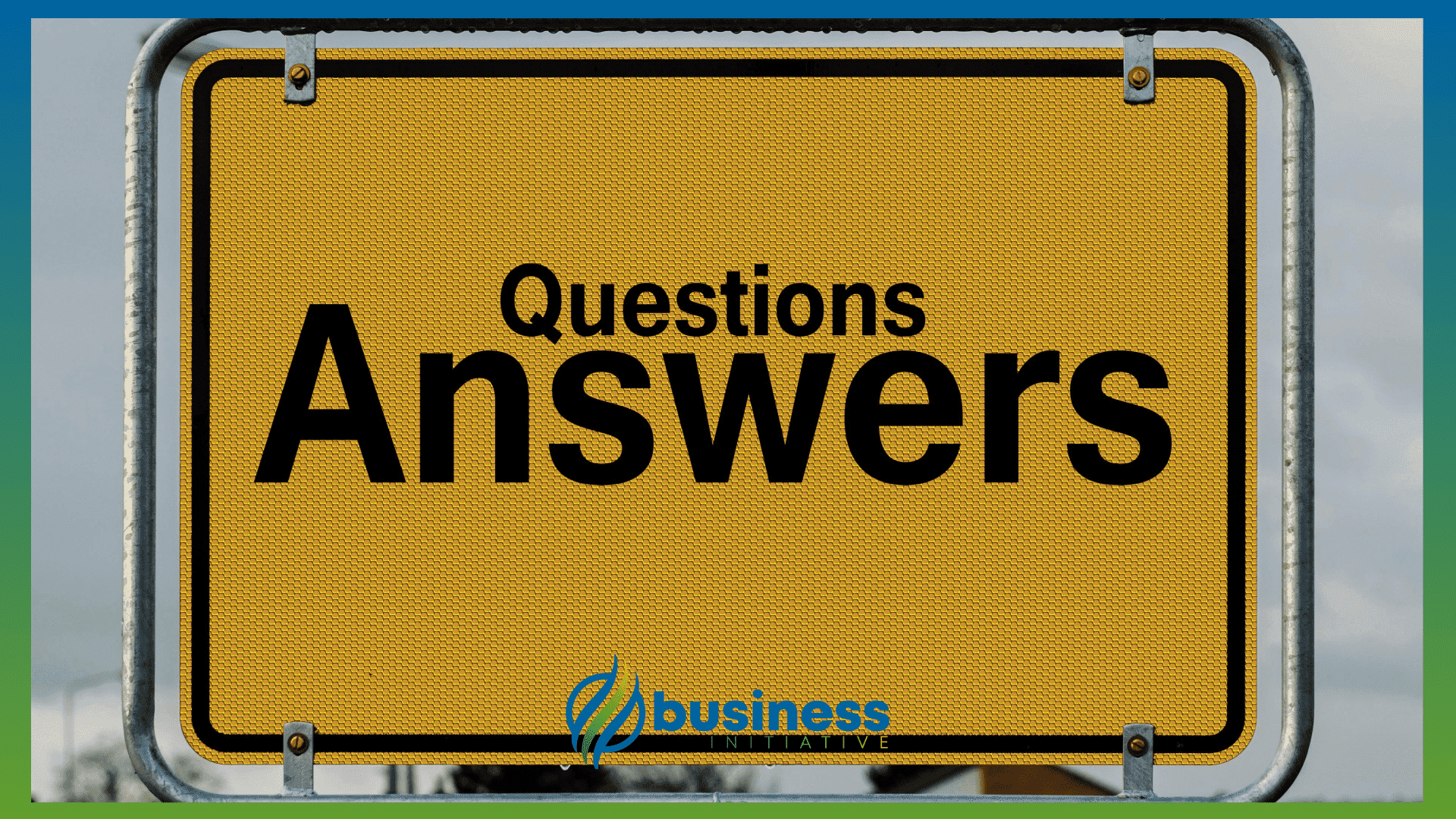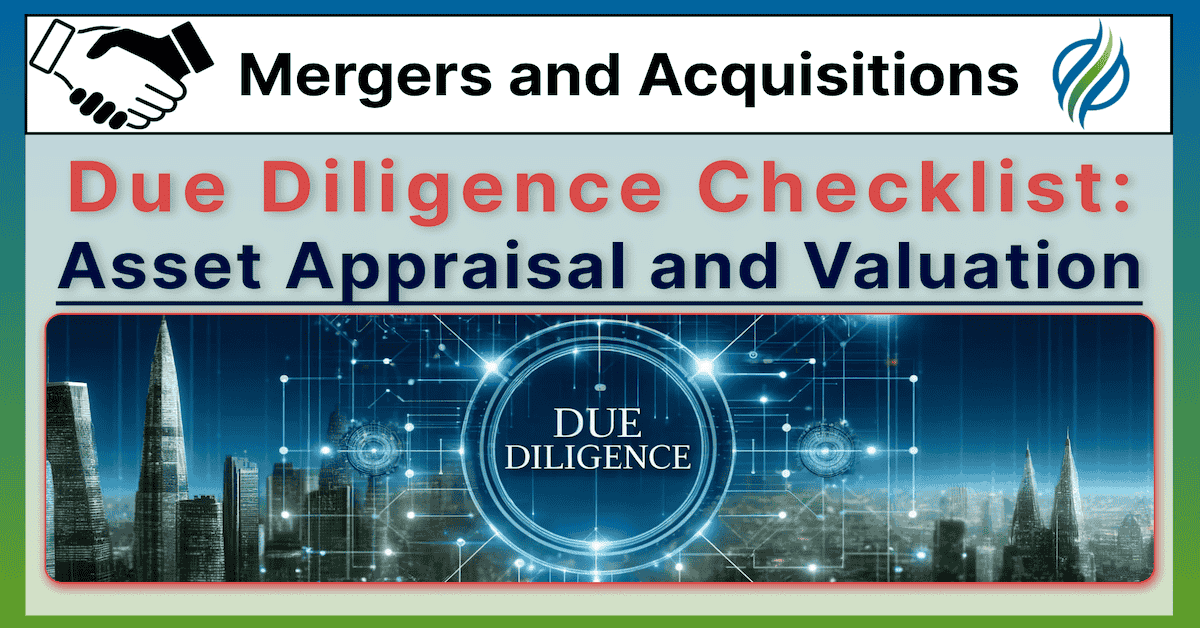In this article, we’ll explore asset appraisal and valuation in mergers and acquisitions.
Understanding how to accurately value assets is crucial.
It ensures you’re paying a fair price and identifying potential issues.
 Key Takeaways
Key Takeaways
- Verify tangible assets' existence and condition to ensure accurate valuation and avoid unexpected costs.
- Use appropriate valuation methods for intangible assets to confirm their true worth and marketability.
- Identify off-balance-sheet items to uncover hidden risks and financial obligations.
- Evaluate asset liens and encumbrances to ensure clear ownership and smooth asset transfer.
- Follow practical steps and self-assessment questions to enhance due diligence and make informed acquisition decisions.
This guide is important because it helps you avoid costly mistakes.
You’ll learn practical steps and best practices for verifying and appraising assets.
Knowing what to look for can save you time and money.
To get the most out of this article, follow each section closely.
Pay attention to the practical steps provided.
These tips are actionable and directly applicable.
Use the self-assessment questions to evaluate your current processes and identify areas for improvement.
Ready to master asset appraisal and valuation in M&A?
Keep reading to ensure your next deal is a success.
 Table of Contents
Table of Contents
Asset appraisal and valuation involve determining the fair market value of the target company’s assets, including both tangible and intangible assets.
This process is crucial for ensuring the buyer is paying a fair price for the company and for identifying any potential issues related to asset ownership and condition.
Conducting thorough asset appraisals helps mitigate risks, uncovers hidden liabilities, and provides a clear understanding of the company’s value.

➤ MORE: Check out the FULL Due Diligence Checklist here
Verify Existence and Condition of Tangible Assets (properties, equipment, inventory, etc.):
Determining the existence and condition of tangible assets is essential to verify that all assets listed on the balance sheet exist and are in good working order.
This step involves conducting site visits to inspect physical assets, reviewing inventory reports and asset registers, and verifying ownership documents.
Additionally, assessing the condition of major assets helps to ensure they are accurately valued and any necessary repairs or replacements are identified.
Practical Benefits:
-
Ensures accurate valuation of physical assets.
-
Identifies discrepancies in asset registers.
-
Detects potential issues related to asset condition.
Importance:
-
Helps avoid overpaying for a company based on inaccurate asset listings.
-
Provides clarity on the actual value and condition of physical assets.
-
Reduces the risk of unexpected repair or replacement costs.
Practical Steps:
-
Conduct comprehensive site visits to inspect all major physical assets, ensuring their existence and condition align with records.
-
Review and cross-reference inventory reports and asset registers with actual physical assets to identify discrepancies.
-
Verify ownership documents for all major assets to confirm legal ownership and identify any encumbrances.
-
Assess the condition of significant assets, documenting any wear and tear or maintenance issues that might affect their value.
Self-Assessment Questions:
-
Are all listed tangible assets present and accounted for?
-
What is the condition of major assets?
-
Are there any discrepancies between the asset register and actual assets?
-
Have any significant assets been excluded from the register?
Links to Resources:
Appraise Intangible Assets (patents, trademarks, goodwill):
Appraising intangible assets involves listing all intangible assets, determining their carrying values, and using appropriate valuation methods, such as discounted cash flow (DCF) or market multiples.
It’s crucial to verify ownership and assess the marketability of these assets to ensure valuations reflect their true worth.
Intangible assets, like patents and trademarks, often hold significant value and contribute to the company’s revenue.
Practical Benefits:
-
Provides an accurate valuation of intellectual property.
-
Identifies potential legal issues related to ownership.
-
Enhances understanding of the company’s revenue drivers.
Importance:
-
Ensures fair valuation of intangible assets.
-
Identifies legal risks associated with asset ownership.
-
Enhances strategic value assessment of the target company.
Practical Steps:
-
Compile a comprehensive list of all intangible assets, including their carrying values.
-
Apply suitable valuation methods, such as DCF or market multiples, to determine the fair value of each asset.
-
Verify the ownership of intangible assets by reviewing patents, trademarks, and other legal documents.
-
Assess the marketability and potential revenue generation of intangible assets to ensure they are accurately valued.
-
Evaluate any legal issues or disputes related to the ownership or use of intangible assets.
Self-Assessment Questions:
-
What intangible assets does the company possess?
-
How are these assets valued?
-
Are the valuation methods used appropriate and consistent with industry standards?
-
Are there any legal issues related to the ownership of these assets?
-
How have these intangible assets contributed to the company’s revenue?
Links to Resources:
Identify Off-Balance-Sheet Assets and Liabilities:
Identifying off-balance-sheet assets and liabilities involves reviewing the notes to financial statements and identifying any contingent liabilities, such as pending lawsuits or guarantees. This process is crucial for understanding the full extent of the company’s financial obligations and potential risks, ensuring that all items are disclosed accurately and assessed for their impact on the company’s financial health.
Practical Benefits:
-
Provides a complete financial picture.
-
Uncovers hidden liabilities that may affect the company’s valuation.
-
Assesses potential financial risks.
Importance:
-
Ensures transparency of financial obligations.
-
Identifies potential risks that could impact the company’s financial position.
-
Helps in making informed decisions regarding the acquisition.
Practical Steps:
-
Review the notes to the financial statements to identify any off-balance-sheet items.
-
Investigate any contingent liabilities, such as pending lawsuits or guarantees, to understand their potential impact.
-
Assess the financial implications of off-balance-sheet items on the company’s overall financial health.
-
Verify the disclosure of all off-balance-sheet assets and liabilities to ensure accuracy and completeness.
Self-Assessment Questions:
-
Are there any off-balance-sheet assets or liabilities?
-
How might these items impact the company’s financial position?
-
Are there any pending lawsuits or guarantees that could pose risks?
-
Have all off-balance-sheet items been disclosed accurately?
-
What is the potential financial impact of these off-balance-sheet items?
Links to Resources:
Evaluate Asset Liens and Encumbrances:
Evaluating asset liens and encumbrances involves obtaining title searches for major assets, reviewing lien filings, and other encumbrance documents. It is essential to verify the process for clearing any liens at closing to ensure that the assets are free of legal claims that could affect their value or transferability. This step ensures that the buyer receives unencumbered ownership of the assets.
Practical Benefits:
-
Ensures clear ownership of assets.
-
Identifies potential legal claims that could impact asset value.
-
Facilitates a smooth transaction by clearing liens at closing.
Importance:
-
Prevents legal disputes related to asset ownership.
-
Ensures accurate valuation of assets free from encumbrances.
-
Provides confidence in the transferability of assets.
Practical Steps:
-
Obtain a title search for all major assets to verify ownership and identify any liens or encumbrances.
-
Review lien filings and encumbrance documents to understand their implications.
-
Verify the process for clearing any liens at closing to ensure a smooth transfer of ownership.
-
Consult with legal professionals to resolve any disputes or legal claims related to liens and encumbrances.
-
Ensure all lien filings are reviewed and verified for accuracy.
Self-Assessment Questions:
-
Are there any liens or encumbrances on the company’s assets?
-
How might these liens impact the value or transferability of assets?
-
What is the process for clearing these liens at closing?
-
Have all lien filings been reviewed and verified?
Links to Resources:
FAQs - Frequently Asked Questions About Due Diligence into a Company’s Assets

What is asset appraisal in M&A?
Asset appraisal determines the fair market value of a company's assets.
It ensures accurate pricing and identifies potential issues.
Learn More...
Asset appraisal in M&A involves evaluating both tangible and intangible assets to determine their fair market value. This process is crucial for ensuring the buyer pays a fair price and identifying any potential issues related to asset ownership and condition.
Tangible assets like properties, equipment, and inventory are inspected for existence and condition. Intangible assets such as patents, trademarks, and goodwill are appraised using valuation methods like discounted cash flow (DCF) or market multiples.
- Ensures accurate pricing.
- Identifies hidden liabilities.
- Reduces risks in M&A deals.
Thorough asset appraisals mitigate risks and provide a clear understanding of the company's value, ultimately contributing to successful mergers and acquisitions.
Why is verifying tangible assets important in M&A?
It ensures all listed assets exist and are in good condition.
Prevents overpaying due to inaccurate asset listings.
Learn More...
Verifying tangible assets is essential in M&A to confirm that all assets listed on the balance sheet exist and are in good working order. This involves site visits, reviewing inventory reports, and verifying ownership documents.
Assessing the condition of major assets helps to ensure they are accurately valued and any necessary repairs or replacements are identified. This step helps avoid overpaying for a company based on inaccurate asset listings.
- Conduct site visits.
- Review inventory reports.
- Verify ownership documents.
This process provides clarity on the actual value and condition of physical assets, reducing the risk of unexpected repair or replacement costs.
How are intangible assets appraised?
Using valuation methods like DCF or market multiples.
Verify ownership and assess marketability.
Learn More...
Intangible assets, such as patents, trademarks, and goodwill, are appraised using valuation methods like discounted cash flow (DCF) or market multiples. These methods help determine the fair value of each asset.
It's crucial to verify the ownership of intangible assets by reviewing legal documents and assessing their marketability. This ensures the valuations reflect their true worth and potential revenue generation.
- List all intangible assets.
- Apply suitable valuation methods.
- Verify ownership documents.
Evaluating intangible assets accurately is important for understanding the company's revenue drivers and strategic value in the M&A process.
What are off-balance-sheet assets and liabilities?
Items not listed on the balance sheet but can impact financial health.
Includes contingent liabilities like pending lawsuits.
Learn More...
Off-balance-sheet assets and liabilities are items not listed on the balance sheet but can significantly impact a company's financial health. Examples include contingent liabilities such as pending lawsuits or guarantees.
Identifying these items involves reviewing the notes to financial statements and understanding their potential financial implications. This process provides a complete financial picture and uncovers hidden liabilities that may affect the company's valuation.
- Review notes to financial statements.
- Investigate contingent liabilities.
- Assess financial implications.
This ensures transparency of financial obligations and helps in making informed decisions during the M&A process.
How to evaluate asset liens and encumbrances?
Obtain title searches and review lien filings.
Clear liens at closing to ensure smooth asset transfer.
Learn More...
Evaluating asset liens and encumbrances involves obtaining title searches for major assets and reviewing lien filings to understand their implications. This step ensures that assets are free of legal claims that could affect their value or transferability.
It's important to verify the process for clearing any liens at closing to ensure a smooth transfer of ownership. Consulting with legal professionals can help resolve any disputes or legal claims related to liens and encumbrances.
- Obtain title searches.
- Review lien filings.
- Verify clearing process.
Ensuring clear ownership of assets prevents legal disputes and provides confidence in the transferability and accurate valuation of assets.
In Summary…
Mastering the art of asset appraisal and valuation in mergers and acquisitions is crucial for ensuring you pay a fair price and avoid hidden risks.
By following the detailed steps and using the self-assessment questions provided, you gain a comprehensive understanding of both tangible and intangible assets, off-balance-sheet items, and potential encumbrances.
This knowledge empowers you to make informed decisions, mitigating risks and enhancing the value of your acquisitions.
Applying the information from this article in a practical sense involves thorough inspections, meticulous document reviews, and accurate valuations.
Entrepreneurs who use these guidelines will be better prepared to navigate the complexities of M&A due diligence.
They will ensure that all assets are properly valued and free from legal issues, ultimately leading to smoother transactions and more successful deals.
By leveraging these insights, you stand to gain a clearer picture of the target company’s true value, identify potential liabilities early on, and negotiate from a position of strength.
This will save you time and money, and give you confidence in your investment decisions.
Ready to take your due diligence process to the next level?
Schedule a consultation call with our business initiative or use our contact form to get started.
Stay informed and ahead of the curve by subscribing to the Initiative Newsletter and following us on X.
Take the next step towards successful mergers and acquisitions with our expert guidance.
Sources
- Investopedia - Asset Valuation: For understanding asset valuation methods.
- The Balance - Inventory Management Best Practices: For best practices in managing inventory.
- LexisNexis - Asset Management Solutions: For legal aspects of asset management.
- Cadence Translate - Beginner's Guide to Due Diligence: For an introduction to due diligence.
- CFO - Intangible Assets Audit Considerations: For auditing intangible assets.
- BCG - Marketability Assessment of Intangible Assets: For assessing the marketability of intangible assets.
- Investopedia - Off-Balance-Sheet Items: For understanding off-balance-sheet items.
- PwC - Due Diligence: For comprehensive guides on due diligence processes.
- Deloitte - M&A Due Diligence: For insights on M&A due diligence practices.
- Nolo - Liens: The Basics: For understanding liens and encumbrances.
- EY - Due Diligence Services: For EY's approach to due diligence.


